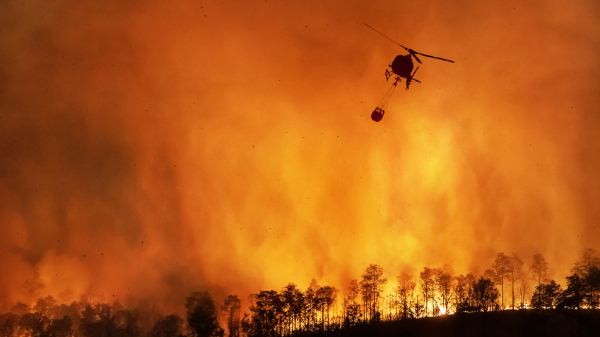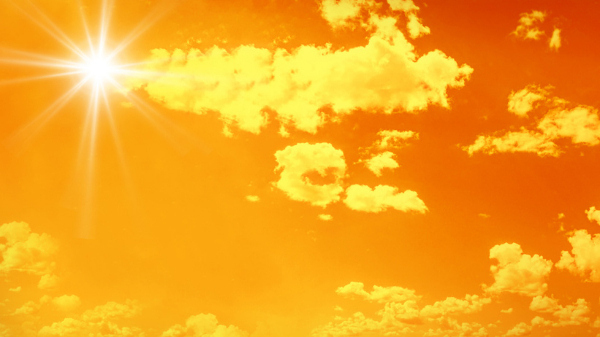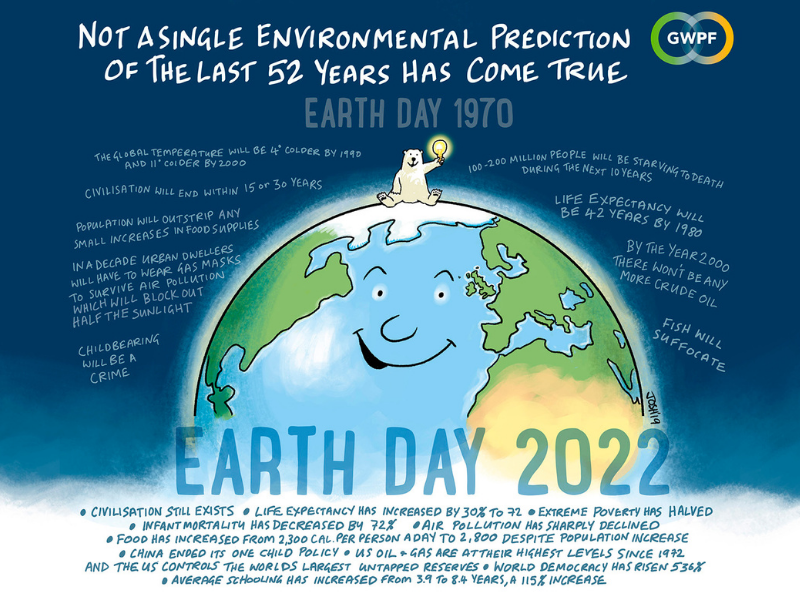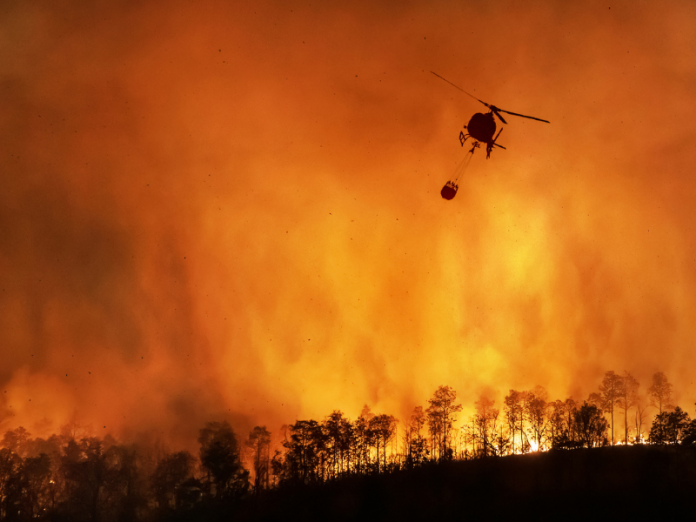YOU SHOULD SUBSCRIBE TO CLIMATE CHANGE WEEKLY.
IN THIS ISSUE:
- It’s Climate Catastrophe Du Jour Season, Again!
- Podcast of the Week: Radical Environmentalists Have Been Lying for Decades
- Too Hot Models Foul Up Climate Projections
- Wind, Solar Struggle With Higher Prices And Material Shortages
- Climate Comedy
- Video of the Week: Never Let a “Weather Event” Go to Waste
- BONUS Video of the Week: Willie Soon: Studying the Role of the Sun on Climate
- Recommended Sites
It’s Climate Catastrophe Du Jour Season, Again!

Like Pandora’s Box, global warming has been blamed for unleashing, or at least worsening, almost every manner of evil in the world—from crime to racism, mental illness to impotency, sports losses to alcoholism, wars to illegal immigration, premature births to incest among polar bears—and beyond. Almost anything one can imagine that is bad in the world, alarmists have claimed, at one time or another, climate change is making it worse.
Whereas cartoon rascal Bart Simpson regularly proclaims “I didn’t do it!”—when, of course, he usually did—climate alarmists shout “Climate change did it!” for almost any troubling trend or harmful event. Despite the lack of evidence linking the two. Or even the existence of a plausible chain of causation that would realistically link a modestly warmer world to the ills for which it is blamed.
As I’ve documented before, even when limiting the claims to extreme weather events or natural disasters—phenomena a region’s climate provably impacts—climate alarmists often blame human-caused warming for producing contradictory or diametrically opposed weather trends or events.
Odd missives and foolish sporadic claims of climate-exacerbated ills aside, there are certain types of events climate change is, like clockwork, claimed every year to be causing or worsening. Most of these occur in the spring and summer. Interestingly, each of these weather-related events have occurred with regularity for millennia. With such regularity, in fact, they have “seasons” named after them. In particular, I’m talking about “allergy season,” “tornado season,” “wildfire season,” and “hurricane season.”
Each of these “seasons” were proclaimed long before purported human-caused climate change was first raised as a possible concern in the late 1980s. Yet now, every spring, when allergies afflict sufferers, a tornado or hurricane strikes, or a wildfire starts, one can expect dozens of headlines and on-air stories attributing the problem to climate change.
It usually begins with “allergy season.” For the past decade or more each spring people have been inundated with stories claiming climate change is causing the allergy season to begin earlier. In fact, this is the one “seasonal” problem which may be fairly linked to climate change. Extended allergy seasons are a result of the earlier onset of spring and lusher plant growth, an important beneficial impact of a warming world. As explored in two recent Climate Realism posts responding to stories published by the Associated Press and in The New Scientist, the longer allergy season is an unfortunate, but manageable, side-effect of the beneficial greening of the earth which is causing trees, plants, grasses, and food crops to grow larger, faster. This greening has contributed to the largest decline in global hunger in history. And the greater plant growth not only removes carbon dioxide from the atmosphere, but the allergy-causing pollen emitted is great for pollinators like bees and birds.
Next up is “tornado season,” typically running from March to early June. You haven’t seen many headlines touting record-setting tornado numbers or severity this year because, with less than a month to go in the season, it has thus far been a below-average year. As I write, only 508 tornadoes of all intensities have been recorded across the continental United States in 2022, compared to 1,200 in a typical year and more than 1,300 in 2021. Indeed, as reported in Climate at a Glance: Tornadoes, the number of tornadoes has been declining for the past 45 years, with the number of strong tornadoes, F3 or higher, falling dramatically. The United States set a record in 2017–18 for the longest period in recorded history without a tornado death, and it set a record for the longest period in history (306 days) without an EF3 or stronger tornado. Even the U.N. Intergovernmental Panel on Climate Change (IPCC) finds no evidence climate change is making tornadoes more prevalent or more powerful, writing, “[t]here is low confidence in observed trends in small spatial-scale phenomena such as tornadoes.”
“Wildfire season” started earlier than usual this year in the desert Southwest. Never ones to let a crisis go to waste, numerous media outlets blamed the early start of the fire season to human-caused climate change, warning it was a harbinger of worse things to come. For instance, on consecutive days in early May, Yahoo News published an article titled, “Climate change is why New Mexico’s wildfire season started early this year,” and Market Watch published one titled, “The Southwest is on fire—climate change is one reason why those wildfires are earlier and more intense.” Both stories and others published recently imply climate change is causing earlier, more intense wildfires in the desert Southwest. Climate Realism responded with data showing these claims are untrue.
Data from New Mexico show this year’s wildfires are hardly unique. From 1996 to 2013, New Mexico experienced 12 wildfires greater than 40 km2 during April in seven different years and nine wildfires started in March in three separate years. In addition, one of Arizona’s largest wildfires in recent decades, the 1996 Lone Fire, began in April.
Data from U.S. National Interagency Fire Center show wildfires in the United States burn approximately 1/4th to 1/5th the amount of acreage annually they did in the 1930s.
What is true of the United States is true for the world in general. For instance, a study published in the peer-reviewed Journal of Geophysical Research analyzing global wildfires back to 1901 reported “a notable declining rate of burned area globally.” In addition, NASA satellites have documented a global long-term decline in wildfires. NASA reports satellites have measured a 25 percent decrease in global acreage burned since 2003.
The scientist interviewed in the Market Watch story, Molly Hunter, associate research professor in environment and natural resources at the University of Arizona in Tucson, lists a number of reasons accounting for this year’s early wildfire start, none of which have anything to do with climate change. Hunter says:
This year we also have a lot of fuel to burn. Last summer, in 2021, the Southwest had an exceptional monsoon season that left green hillsides and lots of vegetation. By now the grasses and forbs that established during the monsoon have dried out, leaving a lot of biomass that can carry a fire. Often in the Southwest, our biggest fire years come when we have a wet period followed by a dry period, like the La Niña conditions we’re experiencing now.
Two additional factors cited by Hunter as contributing to Western wildfires in recent years are the spread of invasive grasses—like buffelgrass, red brome, and cheatgrass, which spread quickly and dry out early, providing large amounts of fuel for severe wildfires—and the booming human population.
Environments with invasive grasses are twice as likely to burn as acreage without them.
Tragically, increasingly the spark for wildfires is human action, through intentional arson or thoughtless negligence.
“[S]tates are also seeing more fires caused by human activities, such as fireworks, sparks from vehicles or equipment, and power lines,” Hunter told Market Watch. “More people are moving out into areas that are fire-prone, creating more opportunities for human-caused ignition.”
The U.S. Forest Service estimates up to 85 percent of wildfires in recent decades were not started by lightning strikes or other natural factors, but by human ignition.
In short, climate change is not among the various factors which have resulted in an early, but not unique, onset of the wildfire season.
Then, there is the granddaddy of all seasonal scares: “hurricane season.” This season officially begins in June and runs through November. However, as is true with the other seasonal weather events or impacts discussed above, the occasional hurricane does form outside the official season. Thankfully, no hurricanes have formed in the Atlantic or Pacific in 2022; but, as in past years, when one does, especially if it builds into a major hurricane and makes landfall, one can predict with some degree of confidence corporate media outlets will be all over it, linking it, and every other major landfalling tropical cyclone this year to climate change.
These claims will be false—as they were when alarmists made them in the past. Climate Realism has published more than 110 responses to government and mainstream media reports linking one hurricane or another to human fossil-fuel use.
Data from the U.S. Environmental Protection Agency and the National Oceanic and Atmospheric Administration’s National Hurricane Center (NHC) show hurricanes have become neither more numerous nor more powerful during the past half-century of modest warming.
The EPA’s 2021 report titled “Climate Change Indicators: Tropical Cyclone Activity” states:
Since 1878, about six to seven hurricanes have formed in the North Atlantic every year. Roughly two per year make landfall in the United States. The total number of hurricanes (particularly after being adjusted for improvements in observation methods) and the number reaching the United States do not indicate a clear overall trend since 1878.
The EPA’s conclusion hurricanes have not become more numerous in recent years is unsurprising, because the IPCC’s 2018 interim report came to the same conclusion. And the NHC reports hurricane impacts on the United States are at an all-time low. The United States recently went more than a decade, 2005 through 2017, without experiencing the landfall of a major hurricane measuring Category 3 or higher—the longest such period in recorded history.
How can climate change be making hurricanes more frequent, more powerful, and more deadly, when the data show none of the claims is true? The answer is, it can’t.
So, while you gird yourselves for the onslaught of alarming stories claiming climate change is behind every pollen-induced sneeze, wildfire, tornado, and hurricane in 2022, keep your allergy medicine on hand and your home insurance paid up, and take comfort in the fact that all of these claims are false.
SOURCES: Climate Realism; Climate Realism; Climate at a Glance
Check Out All Our Presentations in Scotland
Podcast of the Week
On Earth Day, Heartland Senior Fellow Anthony Watts was a guest on the Shaun Thompson Show on AM560 The Answer in Chicago. Anthony and Shaun talk about how the radical environmentalists have been lying about the state of the planet for decades. They discuss the greening of the globe, how miniscule human CO2 emissions are, and more on the show.
Too Hot Models Foul Up Climate Projections

Climate modelers and scientists assessing them are once again acknowledging climate models are running too hot, meaning their projections for future climate change can’t be trusted. A new paper in the peer-reviewed journal Nature points out the “parade of ‘faster than expected’ [temperature rise] results … threaten to undermine the credibility of climate science.”
The paper argues researchers should no longer use the average of all the climate model projections, which includes models that reference Representative Concentration Pathway 8.5 (RCP 8.5), the highest emission scenario ever used, because RCP 8.5 is actually impossible. Using climate models that contain RCP 8.5 results in global temperature projections as much as 0.7°C warmer than an estimate from the Intergovernmental Panel on Climate Change for 2100, and much higher than actually recorded temperature trends.
“We need to use a slightly different approach,” comments Zeke Hausfather, lead author of the paper. “We must move away from the naïve idea of model democracy.”
Instead, he and his colleagues call for a model meritocracy, prioritizing results from models simulating rates of warming which most closely correspond to the rates of warming actually recorded by land-based temperature stations, global satellites, weather balloons, and ocean buoys.
Among the agencies that use the flawed averaging of all climate models and assume too great a sensitivity to increases in carbon dioxide emissions are the National Center for Atmospheric Research, the U.S. Department of Energy, the United Kingdom’s Met Office, and Environment and Climate Change Canada.
SOURCES: Nature; Science; Climate Change Dispatch; Climate Realism
Heartland’s Must-read Climate Sites
Wind, Solar Struggle With Higher Prices And Material Shortages

Eversource, the largest energy provider in New England, initiated a review of its offshore wind ventures, which have been endorsed and encouraged by the Biden administration.
The company is undertaking a “strategic review” of its 50 percent stake in multiple joint offshore wind projects with international renewable energy giant Ørsted to determine if the projects still make good business sense. Eversource serves about 4 million customers in Connecticut, Massachusetts, and New Hampshire. The multi-billion-dollar joint ventures with Ørsted include three offshore wind projects: the South Fork Wind and Sunrise Wind projects off New York’s coast and the Revolution Wind planned for waters off Rhode Island.
Eversource’s review could lead to the sale of all or part of the company’s stake in its partnership with Ørsted.
Eversource touted its joint offshore investments with Ørsted as late as February 11, at a groundbreaking ceremony for the South Fork Wind project in East Hampton, New York. The groundbreaking was attended by U.S. Interior Secretary Deb Haaland and New York Gov. Kathy Hochul (D).
Despite singing the praises of its offshore wind efforts just three months ago, Eversource is now putting the brakes on. Eversource’s review comes amid difficult times for the wind and solar industries. Commodity prices for elements critical to solar panels and wind turbines have risen faster than the rate of inflation in recent months. This has resulted in materials shortages, project delays, cost overruns, and declining profits for wind and solar developers.
The Daily Caller reports the average price for wind, solar, and battery technologies increased 28.5 percent between 2021 and 2022, while the number of wind and solar project completions fell sharply, by 73 percent, between 2019 and 2021.
SOURCE: Daily Caller; Business Wire
Video of the Week: Never Let a “Weather Event” Go to Waste
In Climate Change Roundtable ep14, Andy Singer, H. Sterling Burnett, Anthony Watts, and Linnea Lueken discuss the propensity of the corporate media to blame climate change everytime there is a newsworthy weather event.
BONUS Video of the Week: Willie Soon: Studying the Role of the Sun on Climate
Willie Soon, astrophysicist and aerospace engineer, presents his solo talk at the 14th International Conference on Climate Change last year to discuss the role of the sun on climate change.
Climate Comedy
 via Cartoons by Josh
via Cartoons by Josh






























[…] Link: https://heartlanddailynews.com/2022/05/climate-change-weekly-434-its-climate-catastrophe-du-jour-sea… […]